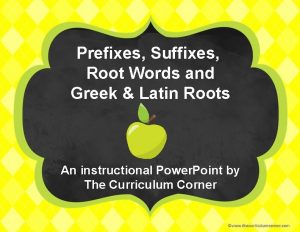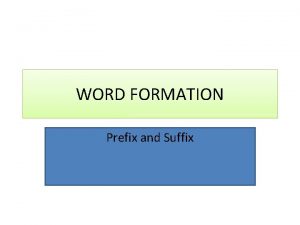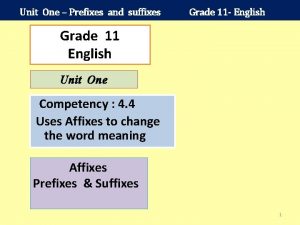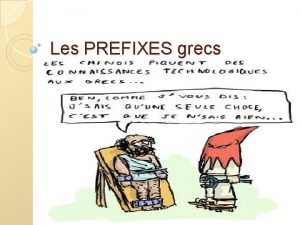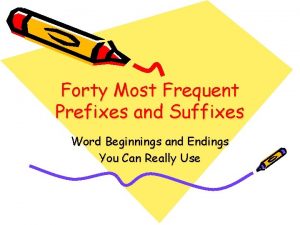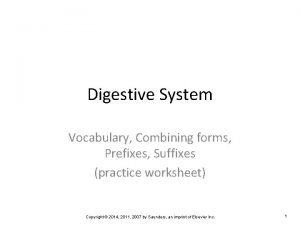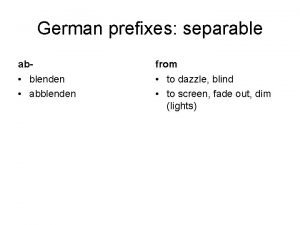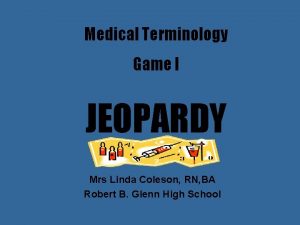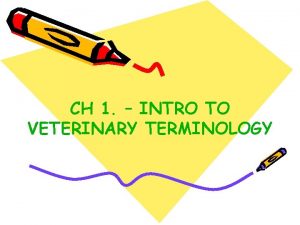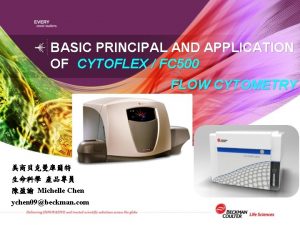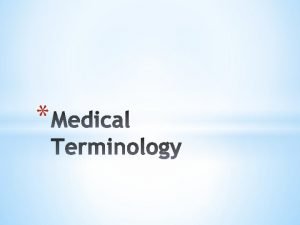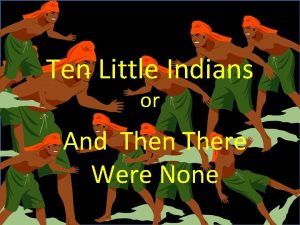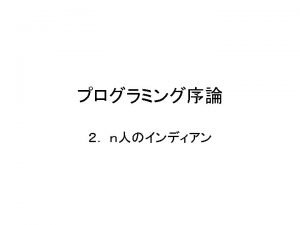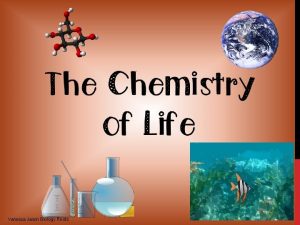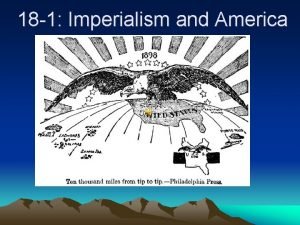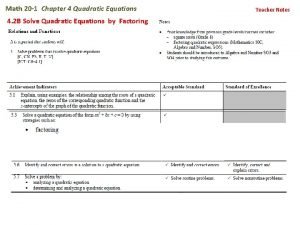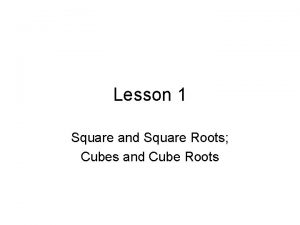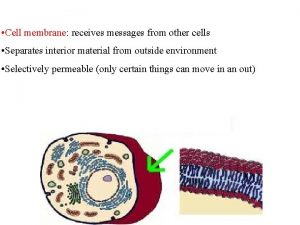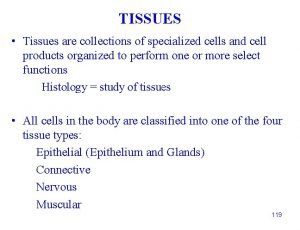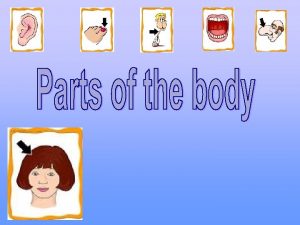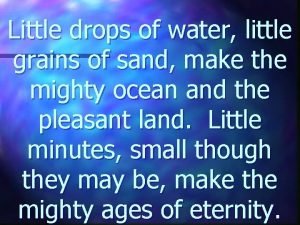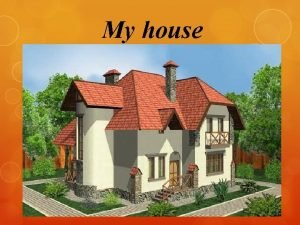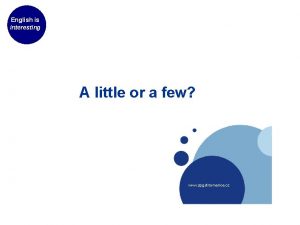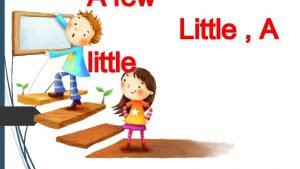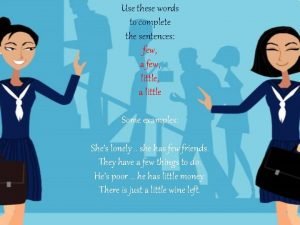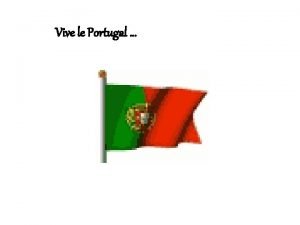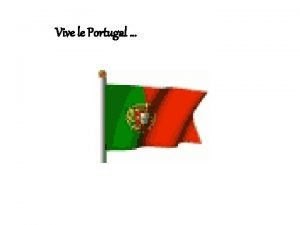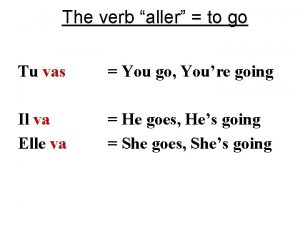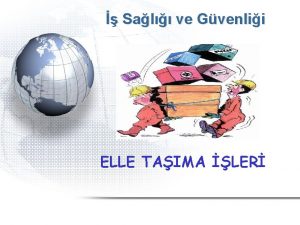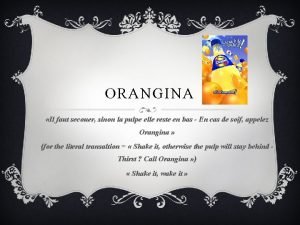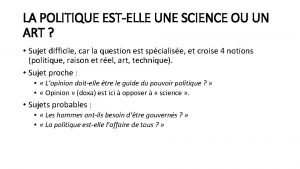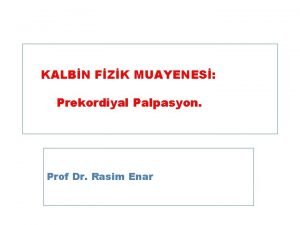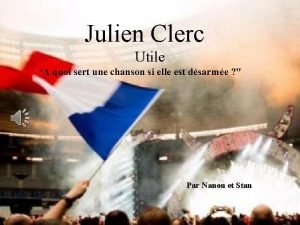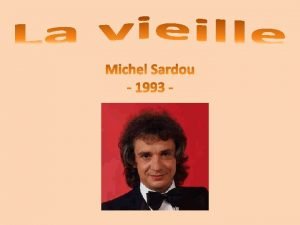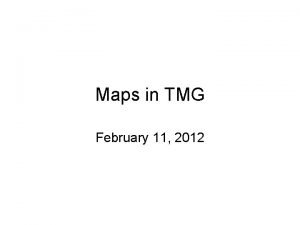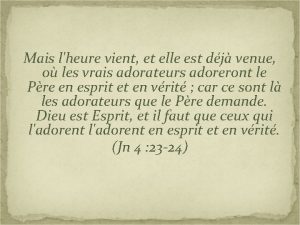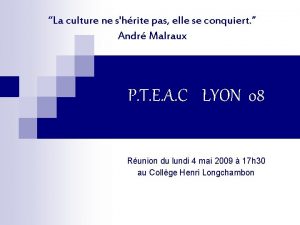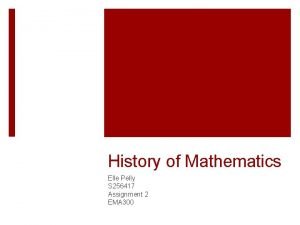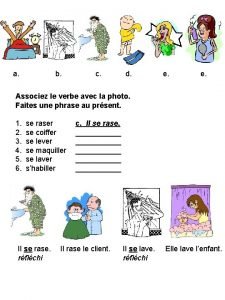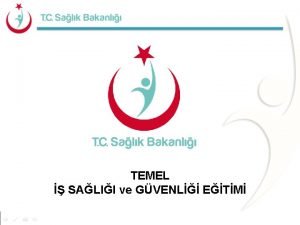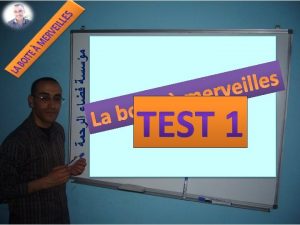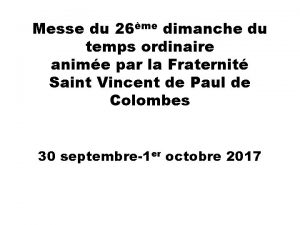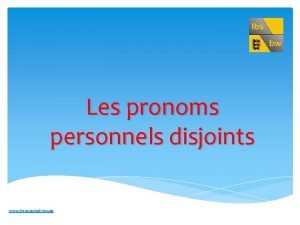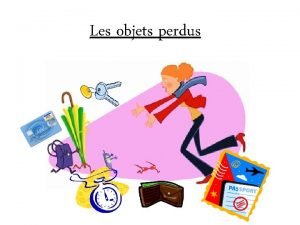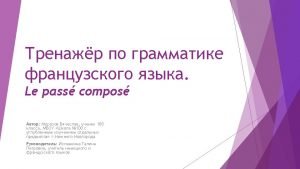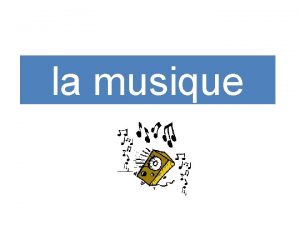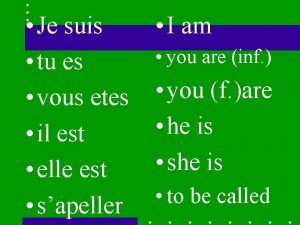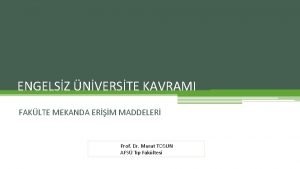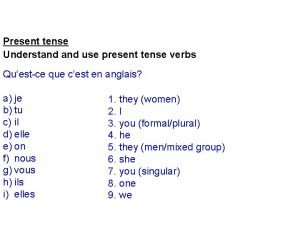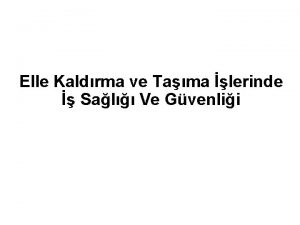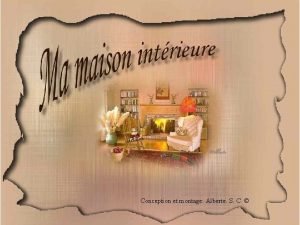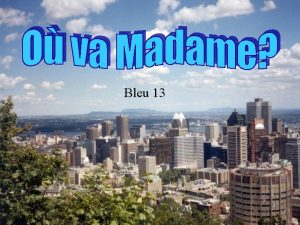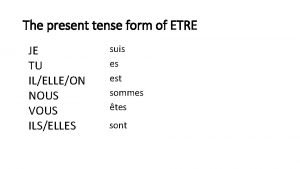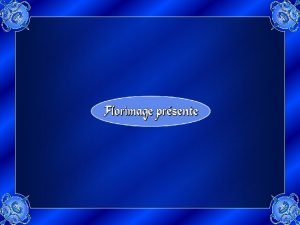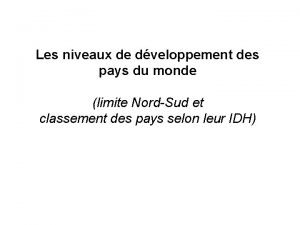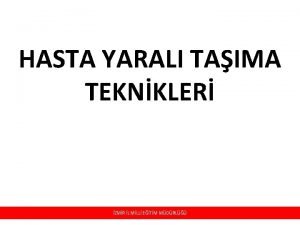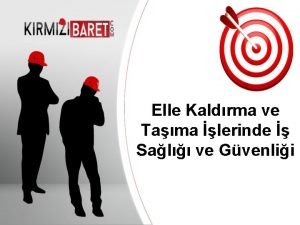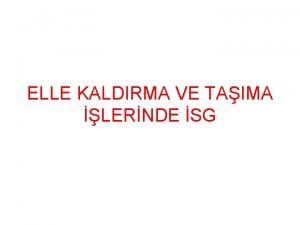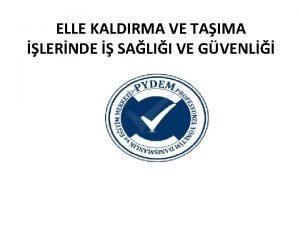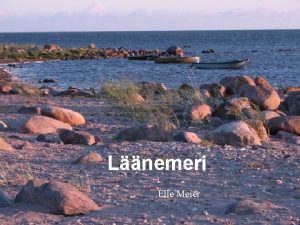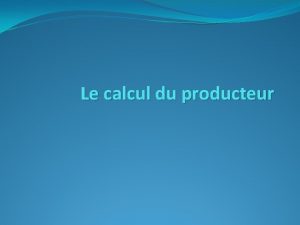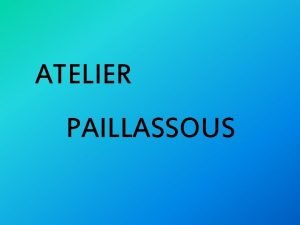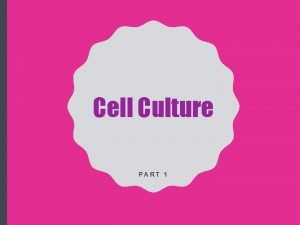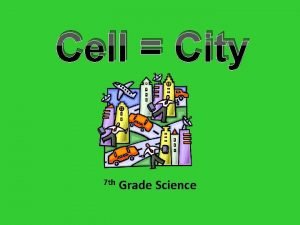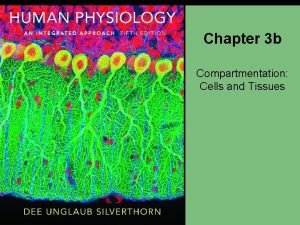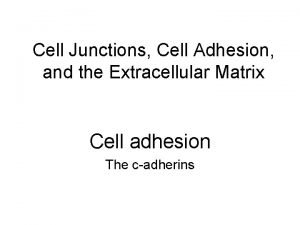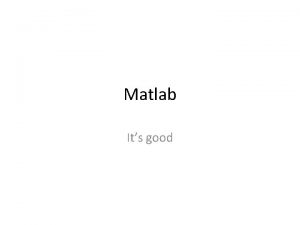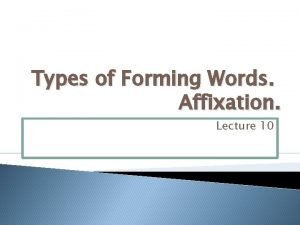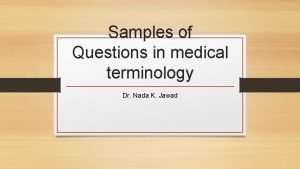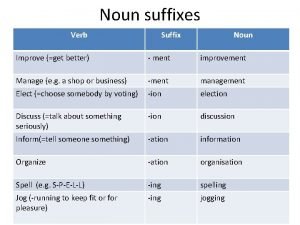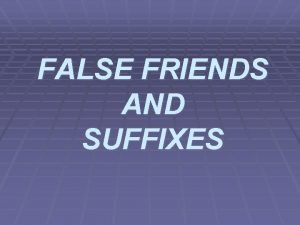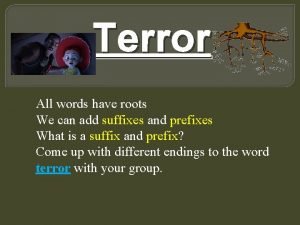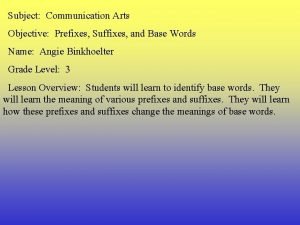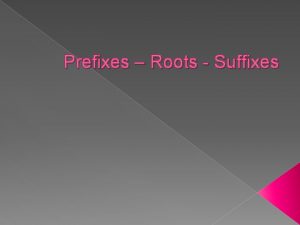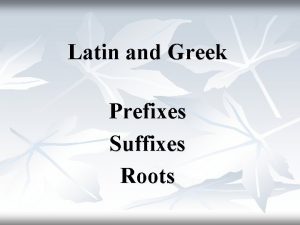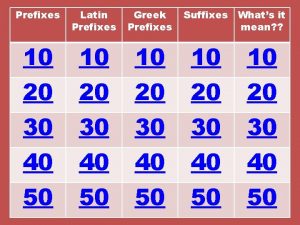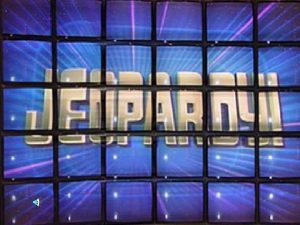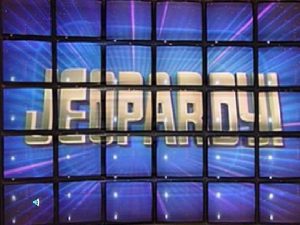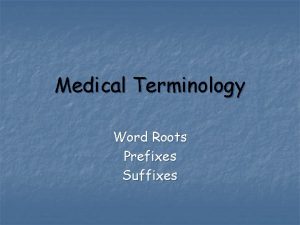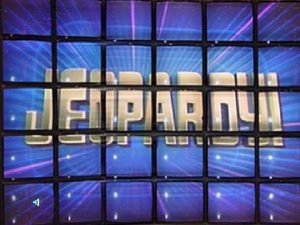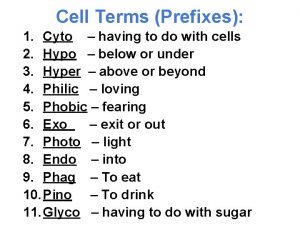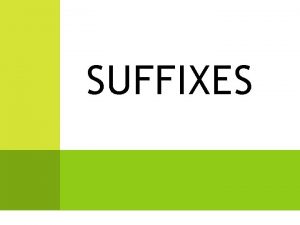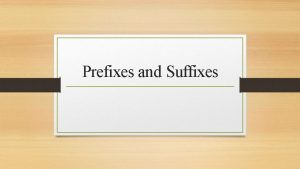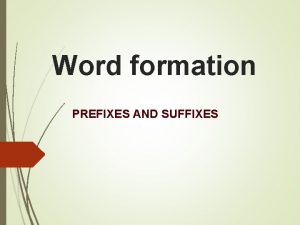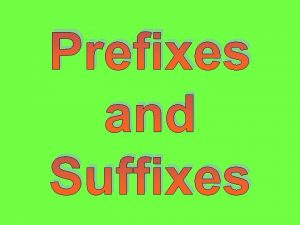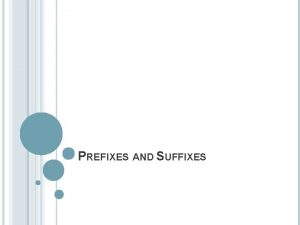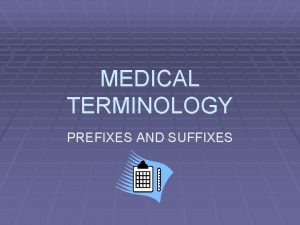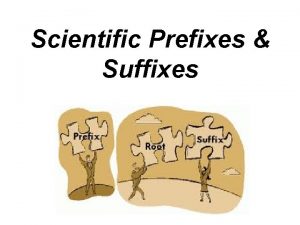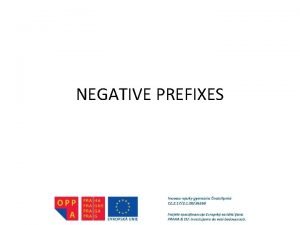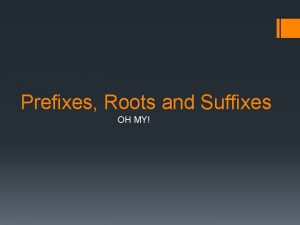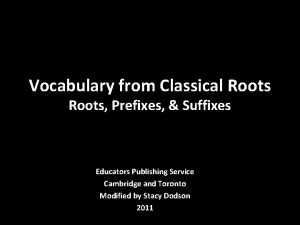Cells Roots Suffixes Prefixes Cyto cell elle little










































































































































- Slides: 138

Cells

Roots, Suffixes, Prefixes • • Cyto-: cell -elle: little -some: body Chloro-: green Endo-: inside -plasm: living substance, tissue Organ-: “that which one works” bodily organ

Zoom-In Organ System Tissue Organism Organ Cell

All living things are made of one or more cells.

Organelles The subunits of structure & function in the cell; each does a specific job for the cell

Membrane-Bound Organelles • These organelles are surrounded by at least one membrane: – Nucleus – Mitochondrion – Chloroplast • Bacteria have NO membrane-bound organelles

Cell Wall • Found in most organisms except animals • Stiff and unbending to give shape and support to cell • Located outside the cell membrane www. wikipedia. org

Cytoplasm • Everything inside the cell membrane and outside the nucleus

Nucleus • Contains DNA • Control center of cell

Mitochondrion (Mitochondria) • Break down sugar to produce energy

Chloroplast • Perform photosynthesis • Make plants green

Flagellum Moves cell

Energy

ENZYMES Enzymes catalyze (perform) chemical reactions

ATP (Adenosine Tri. Phosphate) Energy currency of the cell

Think of Energy Like Money • If you spend all your money, how much do you have left? • If you use all your energy, how much do you have left? • ATP is like the cash of the cell – If you spend it, you have to make more

How Does the Cell Use Energy? • ADP ATP – Loading Gift card • ATP ADP Wal. Mart $$ – Using Gift card Wal. Mart • Use up all your ATP and you’re broke!

Roots! -ase: it’s an enzyme!!! -lysis: break down Di-: two Tri-: three

Cellular Respiration

Roots • Glyco: sugar • Respire: breath

What is cellular respiration? • What does respiration mean? – Breathing, taking in Oxygen • Cellular respiration: the transfer of energy from glucose to ATP, using Oxygen.

Energy + Carbon Dioxide + Water Photosynthesis Sugar + Oxygen Respiration is the Opposite of Photosynthesis Sugar + Oxygen Respiration Carbon Dioxide + Water + Energy

Major Molecules of Cellular Respiration Glucose Glycolysis Pyruvate Fermentation Anaerobic Lactate or Alcohol Aerobic CO 2

Glycolysis • Anaerobic • Happens in EVERY cell on the planet • Takes place in cytoplasm NOT mitochondria

The Kreb’s Cycle

Makes 36 molecules of ATP from 1 molecule of glucose… We said earlier that a molecule of glucose stores the amount of energy in 90 ATP. Why doesn’t cellular respiration produce 90 ATPs per glucose?

Photosynthesis

Roots • Photo: light • Synth: make

Chemical Equation Carbon Dioxide Water Photosynthesis CO 2 H 2 O Photosynthesis Glucose C 6 H 12 O 6 Oxygen O 2


Chloroplast

Photosynthesis Overview

Factors Affecting the Rate of Photosynthesis • Amount of available water • Temperature • Amount of available light energy

Diffusion “Let me out!”

Roots Exo-: outside Endo-: inside -osis: process of Homo-: same Sol-: loosen Hyper-: over Hypo-: under Iso-: same

Homeostasis If a condition changes, start a process to change it back to the desired value Sweat Blood Temp: <98. 6 Blood Temp: 98. 6 Shiver Blood Temp: >98. 6


Outside cell Sugar Su ga r. P er m ea bl e Sugar Inside cell

Outside cell te W as te Pe rm ea bl e Was te te Was Inside cell

Outside cell H O H H W at er H H Pe rm ea bl e H O O H H H O H Inside cell

Huh? What’s the Difference? ? ?

Osmosis vs Diffusion Osmosis is a type of diffusion; it’s the diffusion of water. Just like Girls are a type of human; they’re the humans who are female.

Active vs. Passive Transport Active Passive Needs energy Doesn’t need energy Against gradient With gradient From low to high From high to low

Best Condition Effect of Tonicity on Cells pingrybiology. pbwiki. com

Structure of Nucleic Acids

Deoxyribo. Nucleic Acid Ribo. Nucleic Acid

The Nitrogen Bases • In DNA, there are four: – Adenine (A) – Thymine (T) – Guanine (G) – Cytosine (C) • In RNA, thymine is replaced by uracil (U) They’re like different “flavors” of nitrogen base

Arrangement of Nucleotides in DNA P N S N N N S S P P P


S N P S N Arrangement of Nucleotides in RNA P


Differences Between DNA & RNA: • • DNA Contains deoxyribose Contains thymine Double stranded Must stay in nucleus • • RNA Contains ribose Contains uracil Single stranded Can move between nucleus and cytoplasm

Function of Nucleic Acids

DNA Stores Information • Information is stored in genes • Gene: A length of DNA that has the instructions for making one protein

Codons • DNA can be read like written language. • DNA “words” are three nucleotides long – Called codons This stretch of DNA: ATGGGAACGGTTAGCGGCTAA Is read like this: ATG GGA ACG GTT AGC GGC TAA

DNA Replication

Roots • Chrom-: colored • -some: body

How Does DNA Make Copies? • Since A only pairs with T, and G only with C, you can use one strand to predict the sequence with another strand • One strand can serve as a template

Step 1: Unwind the Double Helix

Step 2: Add Nucleotides

Step 3: Ligation & Completion

Damage & Repair • Chemicals & ultraviolet radiation damage DNA – Cells continuously repair damaged DNA • Excision repair – Any of over 50 repair enzymes remove damaged parts of DNA – DNA polymerase and DNA ligase replace and bond new nucleotides together

Protein Synthesis

Protein Synthesis • Synthesis (production) of polypeptide chains (proteins) • Two phases: 1. Transcription: produces m. RNA 2. Translation: produces protein

General Path of Protein Synthesis DNA RNA Protein

DNA Transcription Translation RNA Protein

Transcription


Translation

Overview m. RNA Start codon A U G G G C U C C A U C G G C A U A A codon 1 Protein codon 2 Methionine codon 3 Glycine Serine codon 4 codon 5 Isoleucine Peptide bonds codon 6 Glycine codon 7 Alanine Stop codon

Genetic Code • Every codon of DNA or RNA stands for ONE amino acid • There a possible 64 codons with 20 amino acids – Most amino acids have more than one codon • Code is nearly universal among living organisms

The Table

Remember the Complementary Bases • On DNA: – A-T – C-G • On RNA: – A-U – C-G

Genetics Review

Alleles: Dominant vs. Recessive • Alleles are variations of genes • Dominant alleles are always expressed – Written as capital letters: S or A – Examples are black hair, brown eyes, cleft chin • Recessive alleles are only expressed when there is no dominant allele – Written as lower-case letters: s or a – Examples are blond hair, blue eyes, sickle cell anemia, hemophilia

Genotype vs. Phenotype • Genotype is the instructions – What alleles do you have? • Phenotype is the result – What traits are expressed? – The dominant trait always decides the phenotype

Heterozygous vs. Homozygous • • ‘Hetero’ = ? ‘Homo’ = ? ‘-zygous’ = Zygote What are these genotypes? – Aa – bb – CC

Taxonomy

What is Classification? • Arrangement of organisms into orderly groups based on their similarities • AKA taxonomy • Taxonomists identify & name organisms

Taxonomic Groups BROADEST TAXON Domain Kingdom Phylum (in plants Division) Class Order Family Genus Species NARROWEST TAXON



Domain Eukarya • Contains 4 kingdoms • Protista (protozoans, algae) • Fungi (mushrooms, yeasts ) • Plantae (multicellular plants) • Animalia (multicellular animals)

Kingdom Plantae • Multicellular • Autotrophic • Perform photosynthesis

Kingdom Animalia • Multicellular • Heterotrophs • Move

Taxons • Most genera contain a number of similar species, with the exception of Homo that only contains modern humans • Classification is based on evolutionary relationships

Basis for Modern Taxonomy • Homologous structures (same structure, different function) • Similar embryo development • Similarity in DNA, RNA, or amino acid sequence of Proteins

Homologous Structures show Similarities in mammals.

Similarities in Vertebrate Embryos

Cladogram Diagram showing how organisms are related based on shared, derived characteristics such as feathers, hair, or scales

Multicellular vs Unicellular • Multicellular organisms – Multiple cells – Complex organization – Units of function: organs, organ systems – Can reproduce sexually or asexually – Examples • Us , plants, mold • Unicellular organisms – One cell – Very simple organization – Units of function: organelles – Can only reproduce asexually – Examples: • Yeast, bacteria, algae

DIGESTIVE SYSTEM

GASTRO- STOMACH


5 Steps of Digestion 1. 2. 3. 4. 5. Ingest Break down Move through digestive tract Absorb nutrients and water Eliminate waste

In the Beginning: The Mouth • Teeth break food into small pieces • Saliva contains enzyme that digests starch • Food moves into esophagus: tube leading to stomach

Stomach • Mechanical digestion – Muscles churn (grind) food • Chemical digestion – Gastric juices • Enzymes & stomach acid

• Produces bile – Helps digest fats • Detoxifies blood • Produces urea • Converts glucose to glycogen • Produces certain amino acids Liver

Small Intestine • Finishes mechanical digestion • Pancreatic enzymes finish chemical digestion

Large Intestine • Absorbs water • Bacteria aid in digestion • Stores solid waste in rectum until defecation

Circulatory System

Cardio- heart

Heart

Arteries take blood away from the heart Veins take blood back to the heart

Capillaries • Tiny blood vessels • Location of O 2 and CO 2 exchange • Must be within diffusion distance of ALL cells Oxygenated Blood Deoxygenated Blood www. rutgers. edu

Muscles

Myo-: muscle Sarco-: relates to muscle

Types of Muscle • Striated – A. K. A. Skeletal Muscle – Voluntary • Smooth – Found in internal organs – Involuntary • Cardiac – Found only in heart – Involuntary

STRIATED (SKELETAL) MUSCLE

Functions • • • Keep body upright Move arms and legs Respiration (breathing) Circulation of the blood Heating and cooling of the body

At The Organ Level • Work in opposing pairs to produce movement – Flexor: when contracted, bends joint • Ex. Bicep – Extensor: when contracted straightens joint • Ex. Triceps

Nervous System

NERVO- : NERVES CEREBRO- : BRAIN

The Whole System

The Nervous System is Like a Computer Brain Ears Eyes Mouth

The Brain www. science. ca

Spinal Cord • Contains nerves connecting brain and body • Nerves emerge to innervate different body areas www. daviddarling. info

Neuron • Sends information in one direction • Have different shapes depending on function • Acts like an electrical wire

Respiratory System

PNEUMO- & PULMO- = LUNGS

The Whole System lifescience. edublogs. org/

Alveoli: Where It All Happens Small sacs of tissue, surrounded by capillaries O 2/CO 2 exchange happens here Alveoli walls are millimeters thick academic. kellogg. cc. mi. us

Skeletal System

Osteo- & oss- = bone

The Skeleton

Bones

Endocrine System

Hormones • • Act as chemical messengers Released by glands Carried in blood to entire body Along with nervous system, regulate bodily functions


Integumentary System

DERM- = SKIN

www. lumese. com

Excretory System www. iheartguts. com

NEPHRO- & REN- KIDNEY UR- EXCRETION OR URINE

The Whole System www. comprehensive-kidney-facts. com

Nephron • Depending on balance of water in blood, can remove water • Wastes removed from blood here • All blood passes through kidneys www. foxnewmedia. biz

Urinary Bladder academic. kellogg. cc. mi. us

Sidenote: • Sweat glands are also part of the excretory system – Some wastes released in sweat
 Roots prefixes and suffixes lesson 7
Roots prefixes and suffixes lesson 7 Root word dyna
Root word dyna Word formation prefixes and suffixes
Word formation prefixes and suffixes Preheat prefix
Preheat prefix Prefixes grecs
Prefixes grecs 10 common prefixes
10 common prefixes Suffix meaning digestion
Suffix meaning digestion Suffix examples
Suffix examples German prefixes and suffixes
German prefixes and suffixes Word drill roots 1
Word drill roots 1 Prefix and suffix of knowledge
Prefix and suffix of knowledge Jeopardy in medical term
Jeopardy in medical term Veterinarian pronounciation
Veterinarian pronounciation Cyto flex
Cyto flex Urethratresia definition
Urethratresia definition Cyto prefix
Cyto prefix Word roots metric prefixes
Word roots metric prefixes Ten little indian boys poem
Ten little indian boys poem 1 little 2 little 3 little indian
1 little 2 little 3 little indian Vanessa jason www.biology-roots.com
Vanessa jason www.biology-roots.com Perfect squares 1-10000
Perfect squares 1-10000 Lesson 3 existence and uniqueness
Lesson 3 existence and uniqueness The roots of american imperialism economic roots
The roots of american imperialism economic roots Quadratic equation gcf
Quadratic equation gcf What are all of the perfect squares
What are all of the perfect squares Paranasal sinus development
Paranasal sinus development Tubular reabsorption
Tubular reabsorption Parafollicular
Parafollicular Somatic cells vs gametes
Somatic cells vs gametes Why dna is more stable than rna
Why dna is more stable than rna Chlorocruorin
Chlorocruorin Eukaryotic vs prokaryotic cell
Eukaryotic vs prokaryotic cell Plant animal cell venn diagram
Plant animal cell venn diagram Prokaryotic cells vs eukaryotic cells venn diagram
Prokaryotic cells vs eukaryotic cells venn diagram Organelle trail
Organelle trail Masses of cells form and steal nutrients from healthy cells
Masses of cells form and steal nutrients from healthy cells Pseudostratified vs simple columnar
Pseudostratified vs simple columnar 4 types of eukaryotic cells
4 types of eukaryotic cells Are red blood cells prokaryotic or eukaryotic
Are red blood cells prokaryotic or eukaryotic Nondisjunction in meiosis
Nondisjunction in meiosis Cell substance
Cell substance Germ cell vs somatic cells
Germ cell vs somatic cells Collection of specialized cells and cell products
Collection of specialized cells and cell products Who is he
Who is he A little and little meaning
A little and little meaning Little drops of water, little grains of sand meaning
Little drops of water, little grains of sand meaning A few ja few ero
A few ja few ero Little mouse little mouse where is your house
Little mouse little mouse where is your house She is lucky she has few problems
She is lucky she has few problems Fill in a few a little
Fill in a few a little Use few or little to complete the sentences
Use few or little to complete the sentences Vive le vent en portugais
Vive le vent en portugais Vive le vent en portugais
Vive le vent en portugais Aller conjugation
Aller conjugation Elle taşıma kaideleri nelerdir
Elle taşıma kaideleri nelerdir Orangina lambada
Orangina lambada La politique est elle une science ou un art
La politique est elle une science ou un art Prekordiyal aktivite nedir
Prekordiyal aktivite nedir Julien clerc à quoi sert une chanson
Julien clerc à quoi sert une chanson Elle a des cerises sur son chapeau
Elle a des cerises sur son chapeau Je tu il nous vous ils
Je tu il nous vous ils Elle.tmg
Elle.tmg Toute ma force elle est dans mon silence
Toute ma force elle est dans mon silence L'heure est venue ou les vrais adorateurs
L'heure est venue ou les vrais adorateurs Shrite
Shrite Je suis tu es il est elle est
Je suis tu es il est elle est Elle pelly
Elle pelly Elle magazine layout
Elle magazine layout Abcde ils
Abcde ils Elle taşımada 6 temel prensip
Elle taşımada 6 temel prensip De quelle confrérie la voyante était-elle adepte
De quelle confrérie la voyante était-elle adepte Chant la paix elle aura ton visage
Chant la paix elle aura ton visage C'est quoi un pronom personnel
C'est quoi un pronom personnel Il elle
Il elle Tu les passent
Tu les passent Lea elle n'est pas terroriste
Lea elle n'est pas terroriste Je sui tu es il est
Je sui tu es il est Elle karik açma aparatı
Elle karik açma aparatı Elles se sont levées
Elles se sont levées Je, tu, il/elle nous, vous, ils/elles endings
Je, tu, il/elle nous, vous, ils/elles endings Volgorde pronom personnel
Volgorde pronom personnel A piquer elle s'entête
A piquer elle s'entête Elle taşımada 6 temel prensip
Elle taşımada 6 temel prensip Elle tait
Elle tait Elle a sommeil
Elle a sommeil Rester past participle
Rester past participle Elle est pure
Elle est pure Limite nord sud
Limite nord sud Omuzdan destek vererek taşıma
Omuzdan destek vererek taşıma Elle kaldırma ve taşıma işlerinde temel prensipler
Elle kaldırma ve taşıma işlerinde temel prensipler Ilo 128 elle taşıma
Ilo 128 elle taşıma Elle taşımada dikkat edilmesi gereken hususlar
Elle taşımada dikkat edilmesi gereken hususlar Toute ma force elle est dans mon silence
Toute ma force elle est dans mon silence Elle meri
Elle meri Comment calculer le tmst
Comment calculer le tmst La nature nous fournit elle des outils
La nature nous fournit elle des outils Cell city analogy
Cell city analogy Denuding tower
Denuding tower Prokaryotic vs eukaryotic cell
Prokaryotic vs eukaryotic cell Prokaryotic
Prokaryotic Plant cell animal cell venn diagram
Plant cell animal cell venn diagram Cathode and anode half reactions
Cathode and anode half reactions Dry cell vs wet cell
Dry cell vs wet cell Cell wall function
Cell wall function Tonoplast
Tonoplast Cytosol plant cell
Cytosol plant cell Carbohydrate in cell membrane
Carbohydrate in cell membrane Cell strain
Cell strain Finite and continuous cell lines
Finite and continuous cell lines Cell city project animal cell
Cell city project animal cell Types of secondary cells
Types of secondary cells Difference between bacteria and plant cell
Difference between bacteria and plant cell Cell-cell junction
Cell-cell junction Cell-cell junction
Cell-cell junction Which organelle prepares proteins for specific jobs
Which organelle prepares proteins for specific jobs Section 10-2 cell division
Section 10-2 cell division Prokaryotic cell and eukaryotic cell
Prokaryotic cell and eukaryotic cell Eukaryotic cell animal cell
Eukaryotic cell animal cell The scientist mathias schleiden studied _______ in ______.
The scientist mathias schleiden studied _______ in ______. Cell structure graphic organizer
Cell structure graphic organizer Idealized animal cell
Idealized animal cell Walker cell and hadley cell
Walker cell and hadley cell Cell cycle and cell division
Cell cycle and cell division Biology.arizona.edu/cell bio/activities/cell cycle/01.html
Biology.arizona.edu/cell bio/activities/cell cycle/01.html Steps of cell cycle
Steps of cell cycle Matlab string builder
Matlab string builder Galvanic vs electrolytic cell
Galvanic vs electrolytic cell Flexible covering of an animal cell
Flexible covering of an animal cell Productive suffixes
Productive suffixes Suffix ive examples
Suffix ive examples Suffixes of friend
Suffixes of friend Suffixes
Suffixes Which of the following suffixes refers to eating?
Which of the following suffixes refers to eating? Suffix of improve
Suffix of improve Suffix weakness
Suffix weakness Mishkalim
Mishkalim Prefix or suffix of friend
Prefix or suffix of friend Terror suffixes
Terror suffixes Suffix of communication
Suffix of communication

